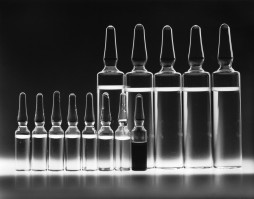
Chemotherapy attacks all cells in our body and not just cancer cells, which is why patients undergoing the treatment often experience side effects such as physical weakness, hair loss and nausea.
However, because cancer cells divide and spread faster than most normal cells, cancer cells are more sensitive to chemotherapy, which kills cells by inhibiting their ability to spread.
Chemotherapy often targets and damages DNA so that cancer cells can no longer replicate their genome, which is the process of copying the genetic information, and stop the growth and die.
However, cancer cells may find ways to escape the chemotherapy.
When attacked by chemotherapy, cells - including cancer cells - will try to repair or bypass the damage.
A group of researchers at the Faculty of Health and Medical Sciences, University of Copenhagen, are trying to figure out how cells repair or bypass the lesions induced by chemotherapy, in the hope to provide new methods to inhibit these repair processes and make the chemotherapy more efficient.
In a new collaborative work with different laboratories at the Center for Protein Research, Associate Professor Julien Duxin and his group have revealed a protein that seems to play a vital role in recruiting DNA key repair and signalling factors.
If they are right, the discovery could be important for future chemotherapy treatment.
'We have found strong evidence that the protein RFWD3 is responsible for orchestrating the repair of different DNA lesions induced by chemotherapy.
If we can inhibit this protein, we could potentially block cells from tolerating DNA lesions, which could lead to more effective chemotherapy in the future', says Julien Duxin, group leader at The Novo Nordisk Foundation Center for Protein Research.
The findings, published in Molecular Cell, is the culmination of three years of research at the Duxin Group.
The group focuses on understanding the basic principles of DNA replication and DNA repair which allow cells to repair genomic lesions like the ones induced by chemotherapy says Julien Duxin.
'Since the 1950s and the pioneer work from Sydney Farber, we have been treating cancer patients with different types of chemotherapeutic agents. These are extremely toxic agents, which have been approved in the clinic because they are effective at killing cancer cells. But the truth is that we still don't know how cells can repair the damage caused by the treatment. It is a huge knowledge gap, which we are trying to fill in with our fundamental research', he says.
Using egg extracts from African frogs, which contain the same repair factors than the ones present in our cells, the group was able to identify the protein RFWD3 as a critical coordinator of the repair events that happen when cells are replicating across from DNA lesions.
The group observed that the absence of the protein leads to a profound defect in recruitment of the components needed to repair and tolerate the damage.
'Repairing DNA lesions is a complex sequence of multiple events. Our goal is to identify the proteins at each event, which are essential to do this type of repair', says Julien Duxin.
Little is known about how repair works across different kinds of DNA damage.
The group is now trying to set up simple systems so it becomes possible to molecularly study how these damages are repaired, Julien Duxin explains.
'We have very little knowledge about how most of these lesions caused by chemotherapy are repaired inside our cells. We are setting up different model systems to study this in detail and identify the key enzymes essential to this process. And by knowing those key enzymes we also get key targets that companies can aim to inhibit', he says.
Source: University of Copenhagen Faculty of Health and Medical Sciences